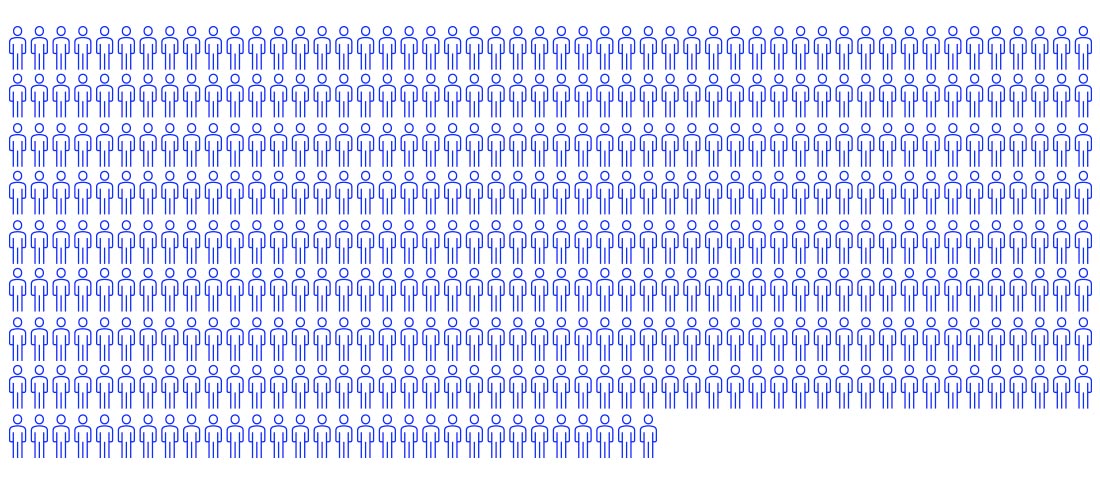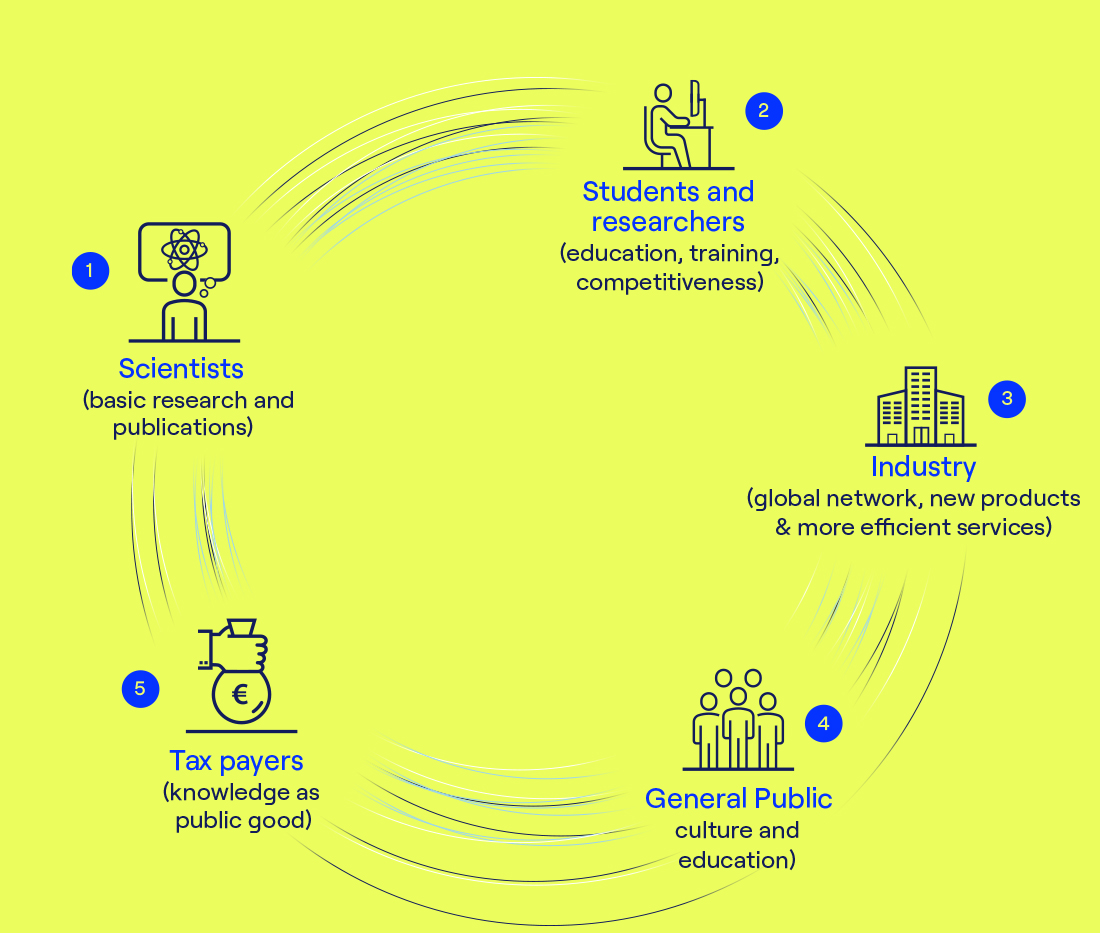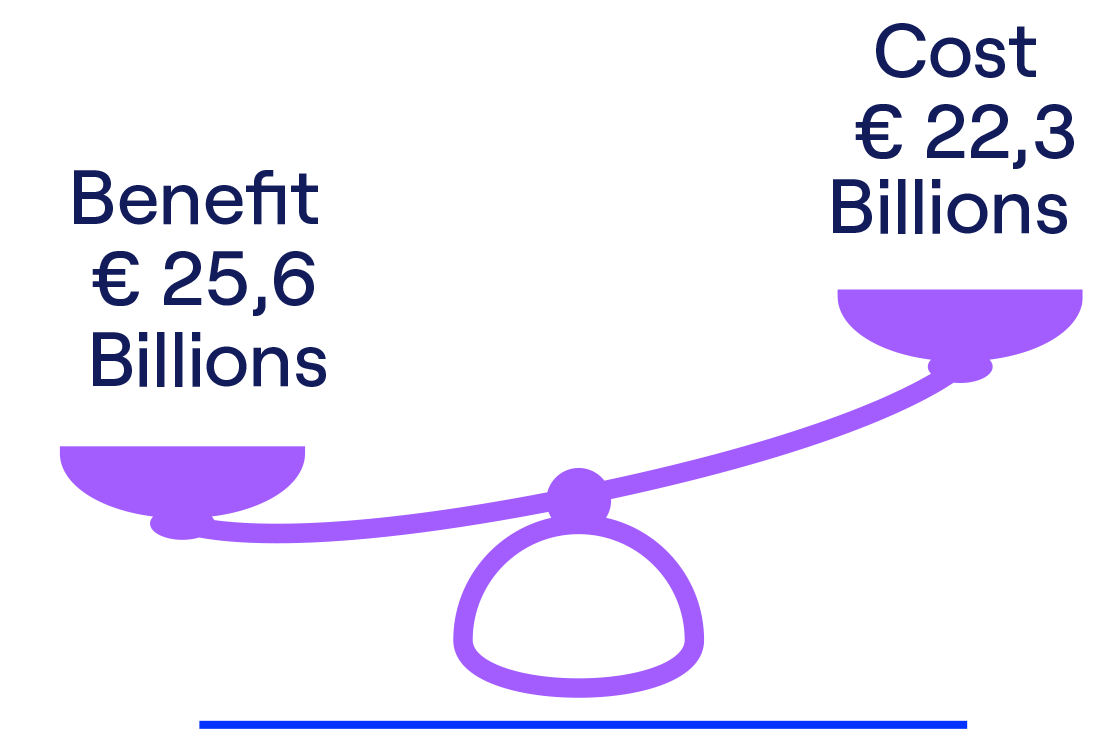1. Scientists
Creating and sharing new scientific knowledge published and shared as a public good.
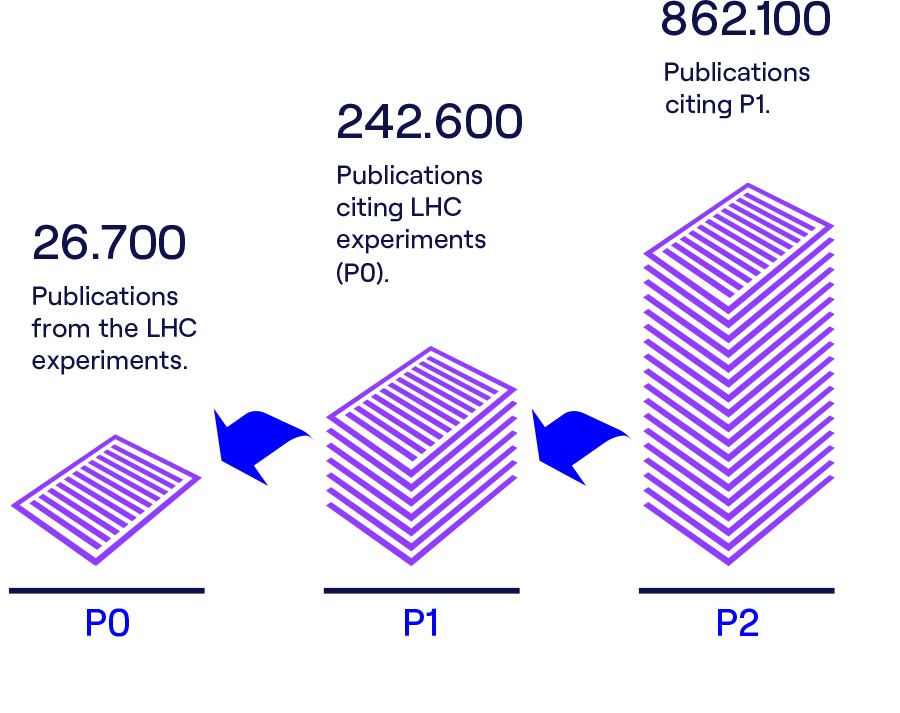
2. Students & Researchers: Towards a new "Knowledge Factory"
Training the next generation of experts
The scientific advances of CERN push the frontiers of technology, which has a positive impact on society globally. Although the core mission of the Laboratory is fundamental research in particle physics, it also has a remit to train the next generation of scientists and to bring nations together.
Furthermore, CERN has a long tradition of organising training courses and visits for students and teachers from all over the world. Large-scale research infrastructures, like the proposed FCCs at CERN, promote science education by pooling teaching resources and expertise, and creating or strengthening networks that connect researchers, teachers and students.
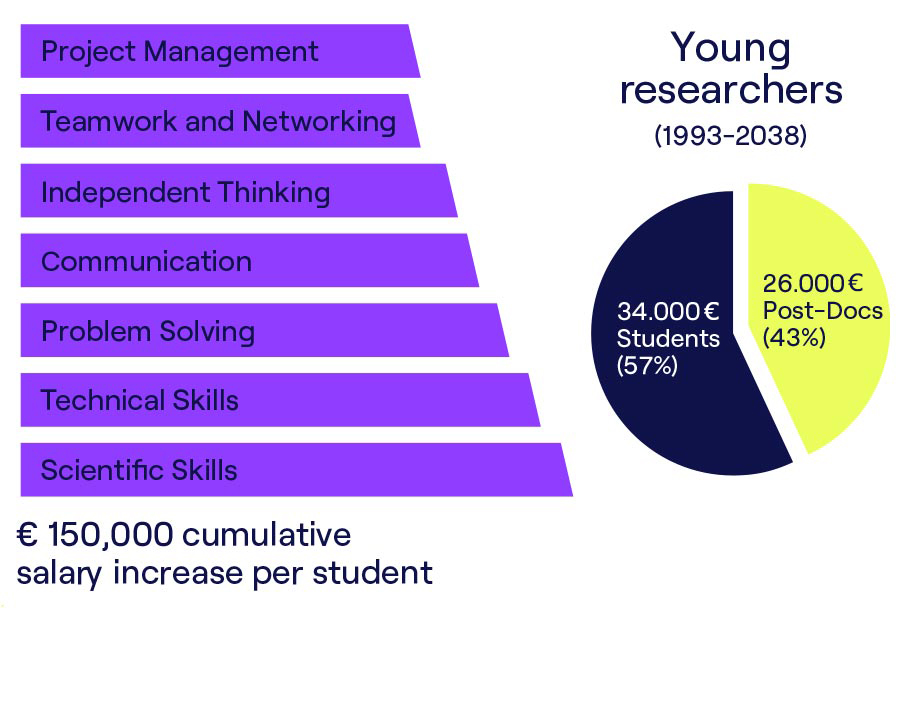
3. Industrial Partners
From its beginning in 1954, CERN has provided a unique facility to scientists worldwide. Its harsh operational conditions, subject to extreme temperatures, vacuum and radiation, as well as geophysical constraints, provide unique challenges that have led to state-of-the-art developments in many technological fields. CERN operations call for advanced expertise in three areas: accelerator, detector and computing technologies. Answering these needs has led to sophisticated developments in cryogenics, superconducting magnets, and radiation hard electronics and microelectronics, to name but a few. Industry is a key partner in this endeavour.
Benefits spill over across the entire supply chain to subcontractors too, showing the extent of CERN’s impact on the industrial landscape of its Member States. As one of the drivers behind state-of-the-art technology, CERN’s procurement contracts with industry spark off real added value to society.
Global Participation | 4.204 Companies | 47 Countries | 33.414 Contracts
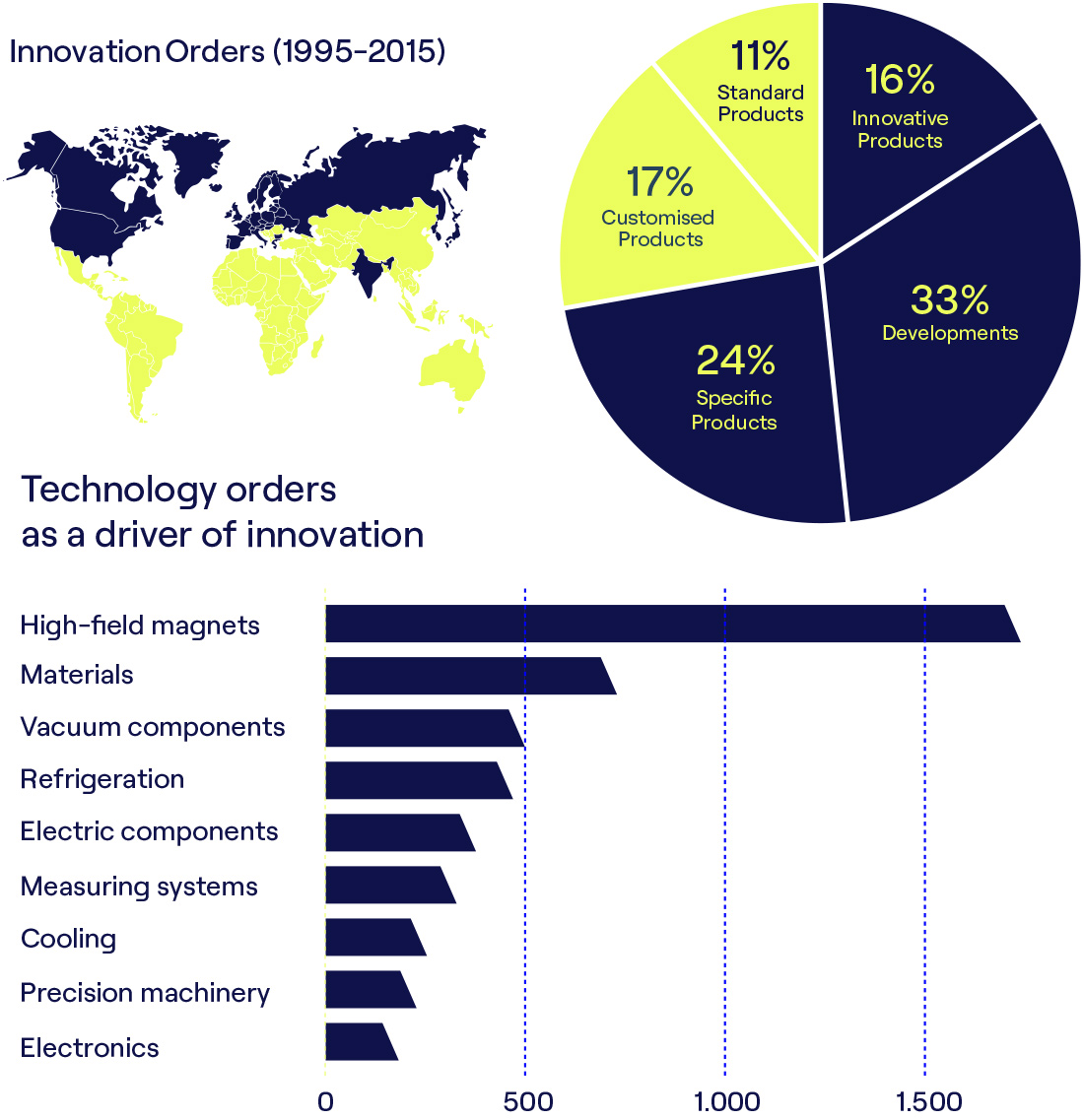
4. General Public
A new research infrastructure also generates a certain cultural value for the general public. Despite the related uncertainties in quantifying this effect, it is found that half of this value comes from onsite visitors to CERN's facilities and through its travelling exhibitions that inspire audiences throughout its members states and beyond.
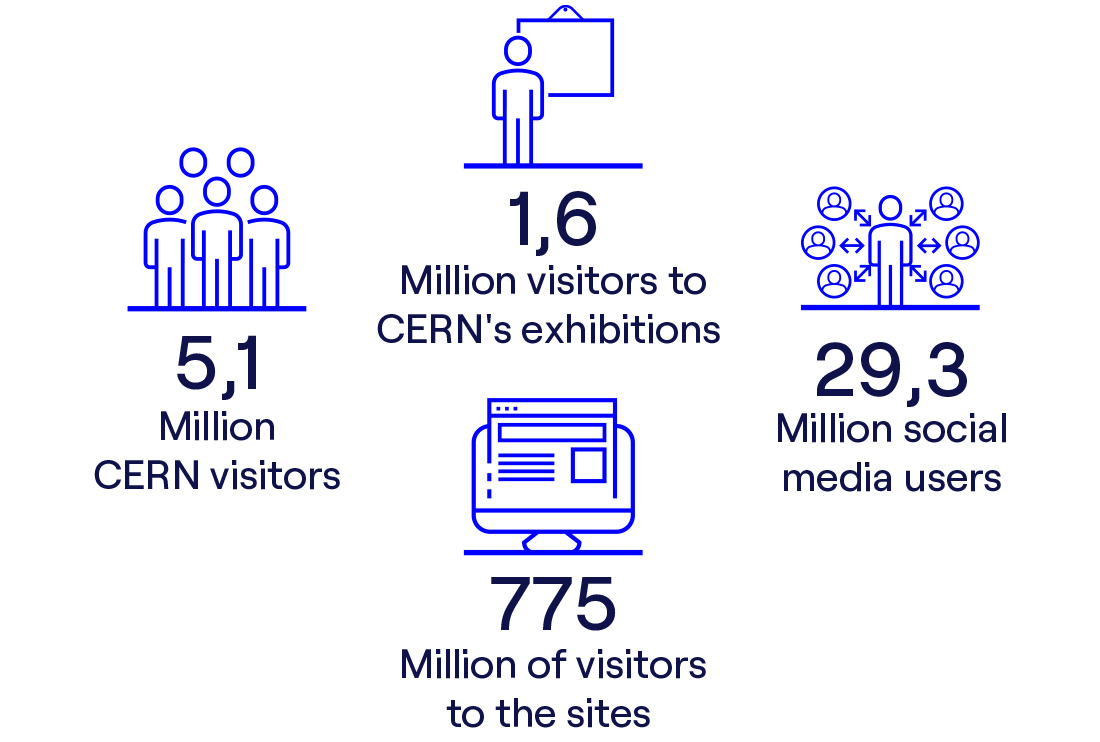
5. Tax Payers
Spread over the 430 Million taxpayers in CERN's 23 Member states, the cost is an average of €2,50 per person and per year
Spare one coffee per year to support our research and training programme?
